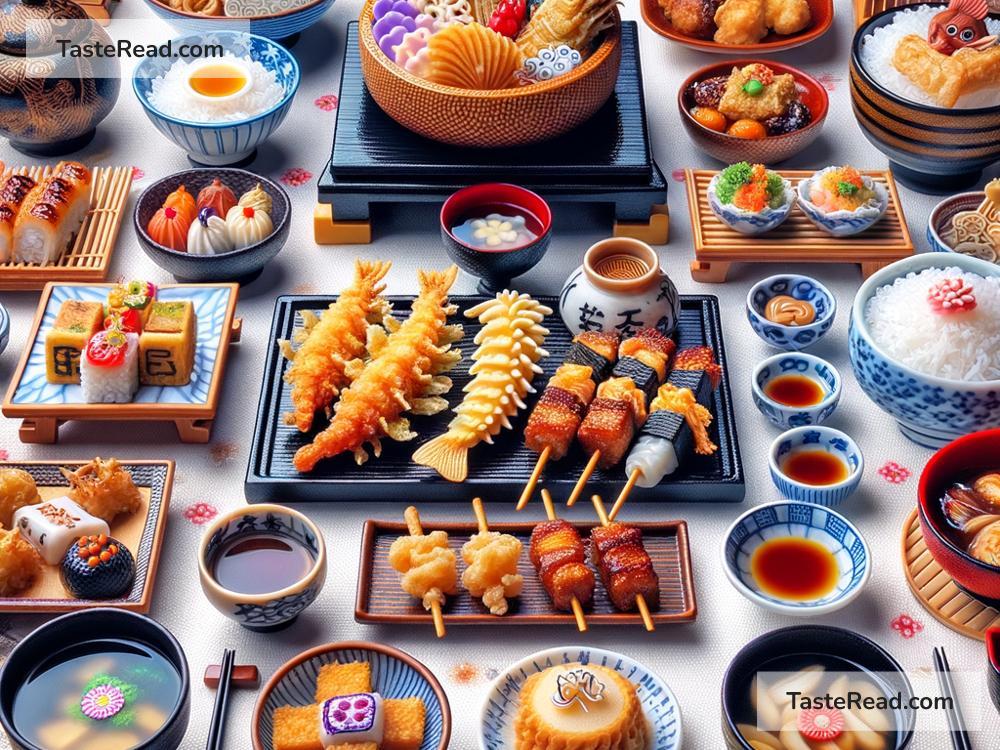Why Japanese Cuisine is So Much More Than Sushi: A Deep Dive into Japanese Food Culture
When you think of Japanese food, what’s the first thing that comes to mind? For many people around the world, sushi is the star of the show. It’s delicious, no doubt, but Japanese cuisine is like a vast ocean, and sushi is just one wave. Let’s embark on a culinary journey to explore the rich tapestry of flavors, traditions, and innovations that make Japanese food culture so unique and cherished.
A Symphony of Flavors
Japanese cuisine, known as Washoku, is a feast not just for the taste buds but for the eyes too. It emphasizes seasonal ingredients, texture, and presentation. Beyond sushi, there’s a whole world of dishes like ramen, tempura, yakitori, and so much more. Each dish tells a story of the region it comes from, the history behind it, and the meticulous care put into its preparation.
The Art of Umami
At the heart of Washoku lies the principle of umami – a rich, savory taste that’s considered the fifth basic taste alongside sweet, sour, bitter, and salty. Ingredients like miso, soy sauce, mushrooms, and seaweed are umami powerhouses that give Japanese food its depth and complexity. This unique taste profile is a big reason why Japanese cuisine is so irresistibly delicious and globally popular.
Seasonality and Sustainability
A key aspect of Japanese food culture is its deep respect for nature. Seasonality plays a huge role in what’s eaten and when. Spring brings tender bamboo shoots and sweet sakura desserts, summer is for enjoying chilled somen noodles, autumn celebrates the harvest with dishes like mushroom rice, and winter warms up with soulful hot pots. This connection to the changing seasons not only makes for a diverse menu year-round but also promotes sustainability and appreciation for the environment.
Itadakimasu! – More Than Just a Word
Before diving into a meal, Japanese people say “Itadakimasu,” which expresses gratitude to all who played a part in bringing the food to the table, including the ingredients themselves. This philosophy of respect and thanks permeates Japanese food culture, reminding us to appreciate every bite and the effort behind it. Such an attitude elevates the dining experience from a daily routine to a moment of genuine connection and mindfulness.
Diversity in Simplicity
One might think that with such emphasis on tradition, Japanese cuisine is static. On the contrary, it’s incredibly dynamic and varied. Take the humble rice ball, onigiri, for example. It can be as simple as a plain ball of rice or feature a wide range of fillings and wrappings, each version offering a different flavor and experience. From street food stalls to high-end kaiseki meals, where a series of dishes are presented in an elaborate, artful manner, the diversity within simplicity is astounding.
Innovations and Influences
Japanese cuisine is not immune to influences from abroad. In fact, it has a unique way of absorbing external culinary concepts and making them distinctly Japanese. Consider the now iconic Japanese curry, which originated from India but was adapted over time to suit Japanese tastes. Or the beloved katsu sando, a breaded pork cutlet sandwich, showcasing how Western concepts can be seamlessly integrated into Japanese culinary traditions. This blend of old and new, domestic and foreign, is a testament to the innovative spirit of Japanese food culture.
Beyond the Boundaries
The charm of Japanese cuisine has long crossed the boundaries of its island nation, capturing hearts and palates globally. From ramen shops popping up in various corners of the world to the growing trend of izakaya-style dining, the international appreciation of Japanese food is undeniable. It’s a bridge that connects cultures, inviting people to explore and enjoy the depth and breadth of what Japanese cuisine has to offer.
So, while sushi is a wonderful entry point into the world of Japanese food, it’s just the beginning. Behind every dish is a story, an expression of culture, tradition, and innovation waiting to be discovered and savored. Japanese cuisine is an invitation to experience the beauty of simplicity, the harmony of flavors, and the joy of eating with gratitude. It’s a journey worth taking, one delightful bite at a time.


